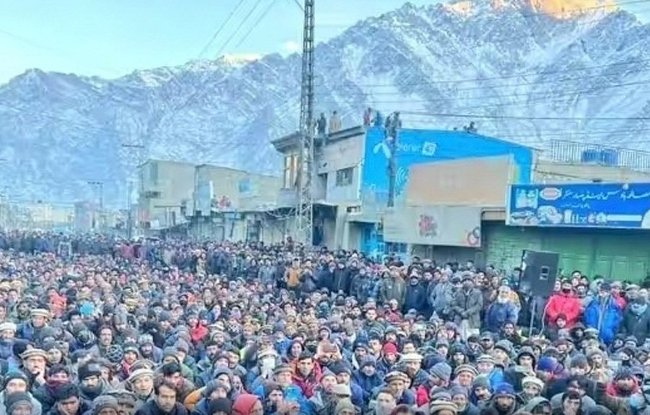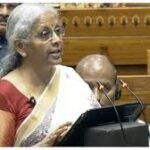The integration of Pakistan-occupied Kashmir with India is a multifaceted issue involving international dynamics, diplomatic efforts, and evolving public sentiment. While anecdotal evidence suggests a shift in the mindset of some residents of POK, several critical factors influence the feasibility and process of such integration. This discussion will explore these aspects, focusing on the international scenario, diplomatic endeavors, and socio-economic conditions.

International Scenario
- Geopolitical Tensions: The Kashmir issue is deeply entrenched in the geopolitical rivalry between India and Pakistan, with both nations asserting claims over the region. Any move towards integrating PoK with India would provoke significant resistance from Pakistan, which considers Kashmir a core national interest. This scenario could escalate military tensions, potentially destabilizing the region further.
- Global Powers: The reaction of global powers is crucial. The United States, China, and Russia have strategic interests in South Asia. The U.S., while fostering stronger ties with India, has a history of maintaining a balancing act in its relationships with both India and Pakistan. China’s involvement is particularly significant due to the China-Pakistan Economic Corridor (CPEC), which passes through PoK. Any change in PoK’s status would directly impact Chinese interests, likely leading to opposition from Beijing.
- United Nations and International Law: The United Nations has maintained that the Kashmir issue should be resolved through dialogue . Unilateral actions by India to integrate PoK without international consensus could lead to diplomatic isolation and potential sanctions.
Diplomatic Efforts
- Bilateral Negotiations: The integration of PoK with India would necessitate extensive bilateral negotiations with Pakistan. Given the current strained relations, characterized by border skirmishes and mutual distrust, initiating such dialogue poses a significant challenge. Confidence-building measures and a reduction in cross-border terrorism are essential to creating a conducive environment for talks.
- Track II Diplomacy: Informal dialogues involving retired officials, academics, and civil society members from both countries can play a pivotal role in easing tensions and building mutual trust. These non-official channels can complement formal diplomatic efforts by fostering a deeper understanding of each side’s perspectives and concerns.
- International Mediation: While both India and Pakistan have historically preferred bilateral approaches to resolving the Kashmir issue, third-party mediation by a neutral country or an international organization could offer a viable path. Such mediation would require both nations to agree to the terms and scope of the mediator’s role, which is challenging given their past reluctance.
Socio-Economic Factors
- Economic Disparities: One of the primary reasons for the shifting sentiment among PoK residents is the economic disparity they observe between themselves and the people of Indian-administered Kashmir. India has invested significantly in infrastructure, education, and healthcare in Jammu and Kashmir, which contrasts with the relatively underdeveloped state of PoK.
- Development Initiatives: India can leverage this disparity by showcasing its development initiatives and economic opportunities in Jammu and Kashmir. Programs aimed at improving infrastructure, creating job opportunities, and enhancing living standards could serve as a powerful incentive for PoK residents to favor integration.
- Education and Healthcare: The availability of better educational and healthcare facilities in Indian-administered Kashmir can attract residents of PoK. Initiatives such as scholarships for PoK students, medical outreach programs, and the establishment of educational institutions can significantly impact public sentiment in PoK.
Public Sentiment and Media Influence
- Changing Perceptions: The public sentiment in PoK appears to be shifting, influenced by better communication and access to information. Residents compare their situation with that of their counterparts in Indian-administered Kashmir, recognizing the potential benefits of being part of India.
- Media and Communication: Effective use of media and communication strategies can amplify this changing perception. Highlighting success stories and positive developments in Jammu and Kashmir can build a narrative that resonates with the aspirations of PoK residents.
- Human Rights and Governance: India’s commitment to human rights and good governance in Jammu and Kashmir is crucial. Demonstrating respect for cultural identities, ensuring political stability, and fostering inclusive governance can build trust and encourage PoK residents to consider integration.
Conclusion
While the integration of PoK with India may seem increasingly plausible due to changing public sentiment, it remains a complex issue fraught with challenges. The international scenario involves significant geopolitical and diplomatic hurdles, requiring meticulous planning and strategic initiatives. Diplomatic efforts must focus on building trust and reducing tensions between India and Pakistan, possibly through a combination of bilateral talks and international mediation.
Socio-economic incentives and improved governance in Jammu and Kashmir can serve as powerful motivators for PoK residents. Ultimately, any move towards integration must be pursued with caution, respecting international law and the aspirations of the people involved. While the road to integration is challenging, a comprehensive approach that addresses geopolitical, diplomatic, and socio-economic factors could potentially make it a reality in the long term.





Leave a Reply